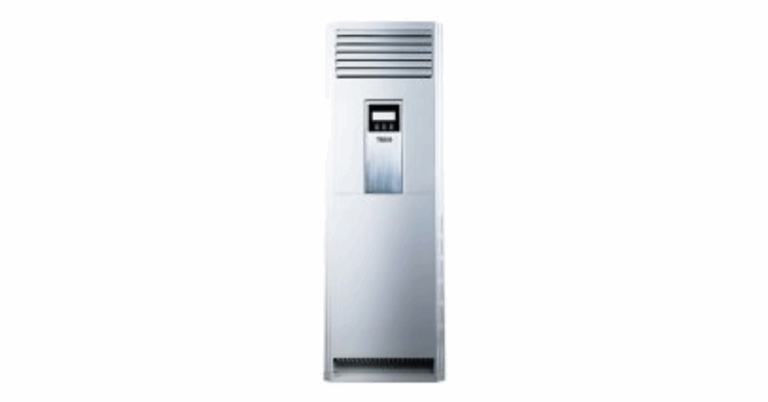Commercial Ceiling Fan: Essential Cooling Solution for Businesses
When it comes to maintaining a comfortable environment in commercial spaces, a commercial ceiling fan is one of the most efficient and cost-effective options available. Whether you run a restaurant, office, warehouse, or retail store, installing the right Commercial Ceiling Fan can improve air circulation, reduce energy costs, and enhance comfort for employees and customers.
This article will cover everything about commercial ceiling fans—their benefits, types, features, installation tips, and frequently asked questions.
What Is a Commercial Ceiling Fan?
A commercial ceiling fan is a robust, industrial-grade fan designed specifically for large or high-traffic spaces. Unlike residential ceiling fans, commercial ceiling fans are built to handle higher ceilings, larger areas, and continuous operation. They often feature powerful motors, durable materials, and advanced airflow designs to meet the demands of commercial settings.
Why Choose a Commercial Ceiling Fan?
Choosing a commercial ceiling fan for your business offers multiple advantages:
Energy Efficiency
A commercial ceiling fan helps circulate air efficiently, reducing the reliance on air conditioning systems. This leads to lower electricity bills and a smaller carbon footprint.
Enhanced Comfort
Proper air circulation prevents stagnant air, improves temperature regulation, and keeps employees and customers comfortable throughout the day.
Cost-Effective Cooling
Compared to HVAC systems, installing a commercial ceiling fan is less expensive and requires minimal maintenance.
Versatility
These fans can be installed in various commercial environments, from warehouses and gyms to restaurants and retail stores.
Types of Commercial Ceiling Fans
There are several types of commercial ceiling fans tailored to different business needs.
HVLS (High-Volume Low-Speed) Fans
HVLS fans are large-diameter fans designed to move large volumes of air at low speeds. Ideal for warehouses and manufacturing plants, HVLS commercial ceiling fans create a gentle breeze that covers a wide area efficiently.
Industrial Ceiling Fans
Built with heavy-duty materials like steel or aluminum, industrial commercial ceiling fans are suitable for harsh environments such as factories or garages.
Commercial Indoor Ceiling Fans
Designed for indoor commercial spaces like offices, retail outlets, and restaurants, these fans focus on quiet operation and aesthetic design.
Outdoor Commercial Ceiling Fans
These fans are made to withstand weather conditions and are perfect for outdoor dining areas, patios, or recreational spaces.
Key Features to Look for in a Commercial Ceiling Fan
When selecting a commercial ceiling fan, consider these essential features:
Airflow Capacity
Measured in cubic feet per minute (CFM), airflow capacity indicates how much air the fan can move. Larger spaces require fans with higher CFM ratings.
Motor Power and Durability
A reliable motor ensures long-lasting performance. Look for fans with motors rated for continuous commercial use.
Blade Size and Material
Blades typically range from 42 inches to over 72 inches in diameter. Materials like aluminum or reinforced plastic offer durability and resistance to wear.
Speed Settings and Controls
Variable speed controls or remote operation add convenience and allow precise airflow adjustments.
Energy Efficiency Ratings
Fans with high energy efficiency ratings reduce operational costs over time.
Installation Considerations for Commercial Ceiling Fans
Installing a commercial ceiling fan requires careful planning:
-
Ceiling Height: Ensure adequate clearance between the fan blades and the floor, typically at least 7 feet.
-
Mounting Type: Choose between flush mount, downrod, or angled mount depending on ceiling height and fan size.
-
Electrical Requirements: Confirm that your electrical wiring can support the fan’s motor.
-
Professional Installation: For safety and optimal performance, it’s recommended to have a licensed electrician handle the installation.
Benefits of Using Commercial Ceiling Fans in Different Industries
Warehouses and Manufacturing Plants
HVLS commercial ceiling fans improve air circulation, helping reduce heat buildup and increase worker comfort, which can boost productivity.
Restaurants and Cafes
In dining areas, commercial ceiling fans improve air circulation without creating uncomfortable drafts, enhancing the customer experience.
Retail Stores
A well-ventilated space keeps customers comfortable, encouraging longer visits and higher sales.
Offices and Conference Rooms
Quiet operation models help maintain a comfortable environment without disturbing meetings or daily work.
Gyms and Fitness Centers
Commercial ceiling fans provide consistent airflow, keeping spaces cool during workouts and reducing humidity.
Maintenance Tips for Commercial Ceiling Fans
Maintaining your commercial ceiling fan ensures efficient performance and longevity:
-
Clean blades regularly to prevent dust buildup.
-
Inspect mounting brackets and hardware periodically.
-
Lubricate moving parts if recommended by the manufacturer.
-
Check electrical connections annually.
-
Replace worn or damaged parts promptly.
Cost of Commercial Ceiling Fans
The cost of a commercial ceiling fan varies depending on size, type, and features:
-
Small to medium-sized fans typically range from $300 to $700.
-
Larger HVLS fans can cost upwards of $1,000 to $3,000 or more.
-
Installation costs vary based on complexity and location.
Investing in a high-quality commercial ceiling fan pays off with energy savings and improved workplace comfort.
FAQ: Commercial Ceiling Fan
What is the difference between a commercial ceiling fan and a residential fan?
A commercial ceiling fan is built for larger spaces and longer operation hours. It features stronger motors, larger blades, and more durable materials compared to residential fans.
Can commercial ceiling fans be used outdoors?
Yes, there are specially designed outdoor commercial ceiling fans made to withstand weather conditions like rain, humidity, and sunlight.
How high should a commercial ceiling fan be installed?
Typically, commercial ceiling fans should be installed at least 7 to 10 feet above the floor for safety and optimal airflow.
Are commercial ceiling fans energy efficient?
Yes, commercial ceiling fans help reduce the load on HVAC systems, leading to energy savings. Many models come with energy-efficient motors.
How often should I maintain my commercial ceiling fan?
It’s recommended to perform basic maintenance every 3 to 6 months, with a thorough inspection at least once a year.
Can commercial ceiling fans improve air quality?
While they do not filter air, commercial ceiling fans improve air circulation, which can reduce hot spots and help distribute fresh air.
Final Thoughts
A commercial ceiling fan is an essential investment for businesses seeking to improve comfort, reduce energy costs, and enhance air circulation in large or busy spaces. Whether you manage a warehouse, office, restaurant, or retail store, the right commercial ceiling fan can transform your environment for the better.
Selecting the appropriate fan involves understanding your space’s requirements, including size, airflow needs, and installation conditions. With proper maintenance, a commercial ceiling fan offers long-lasting performance and significant cost savings.







